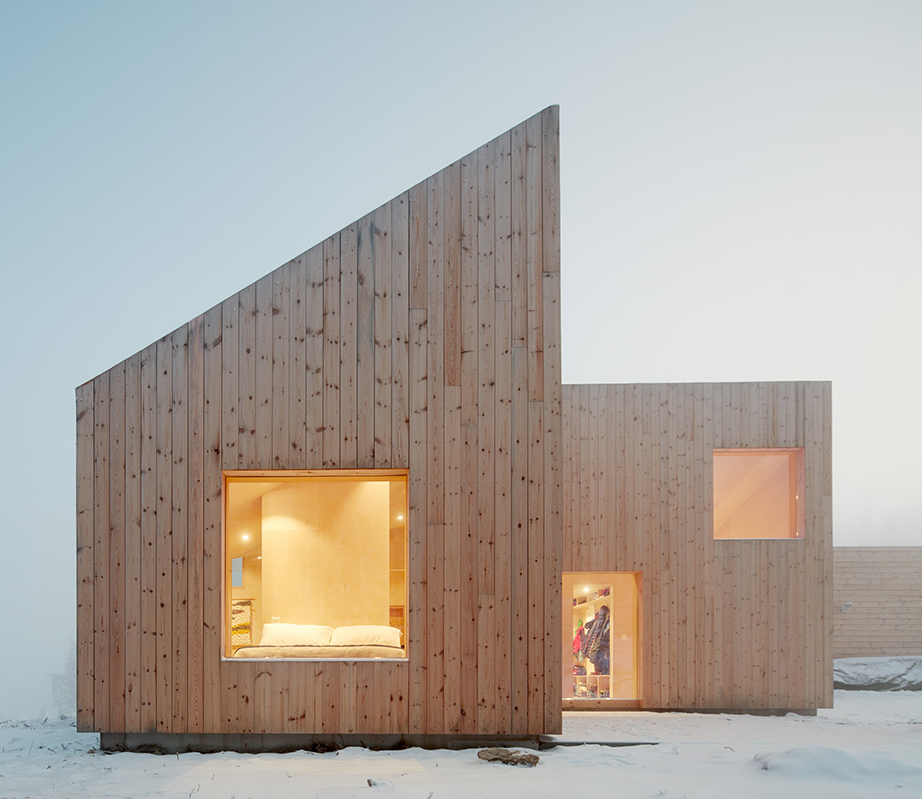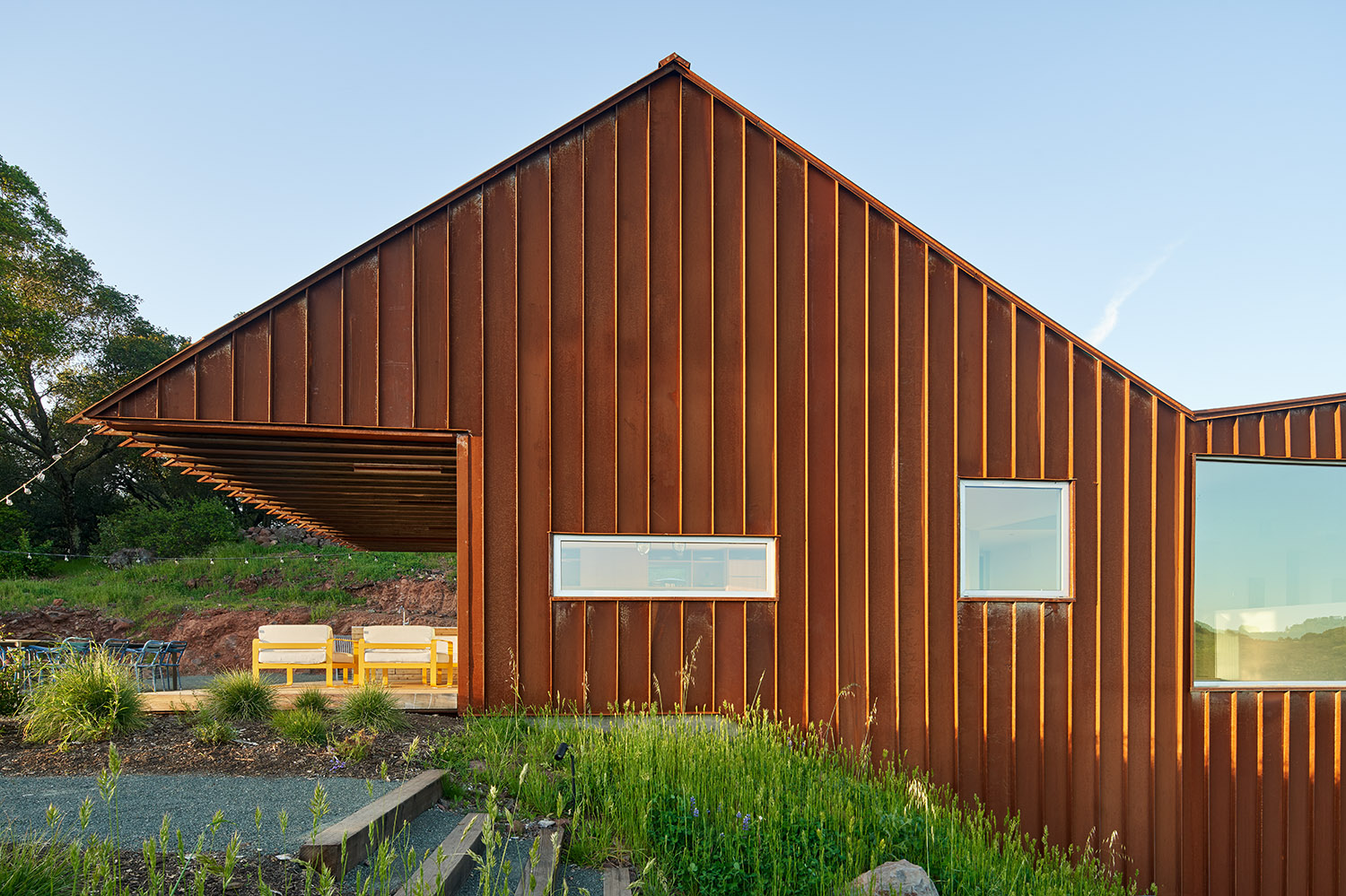Mork Ulnes practice architecture in both Norway and Northern California. We caught up with Casper Mork Ulnes to learn more about the studio’s refreshingly original approach to residential design
Photography by Bruce Damonte
Interview by Jack Byron

Mylla Hytte – Oslo, Norway
What led you to architecture - I’ve read that it perhaps wasn’t a traditional route?
I'm not the type of architect who can say that they decided that they wanted to be an architect after they got their first Lego set. I came to it relatively late in life. My mother was a painter, a fine artist and I've always been inspired by her. Particularly in my teenage years I enjoyed seeing her work, the way that she painted and the thought that went into the whole process.
I enrolled in the California College of the Arts in San Francisco, which was where I was living at the time. I tried out painting and also a bit of graphic design and architecture in my first year, and I pretty quickly came to realize that architecture was it for me.
It wasn't the three dimensional aspects of it that really caught my eye in the beginning, it was the beautiful hand drawings that I saw other students doing. It was through the two dimensional graphic representation and how that represents itself in the third dimension that I became interested. I’ve never looked back since that first year in art school, I never really questioned it since.

Triple Barn House – Sonoma, California
Mork Ulnes have offices in Oslo and San Francisco - does Norwegian and Californian culture cross pollinate between your two offices?
I think that's always been true and now, as the practice is growing and we're working in more geographically diverse places, it's becoming more and more the case. We have projects in construction on three continents and across several states in North America and Europe. I think working more diversely is making it clearer to us that our roots are in California and Norway.
There is definitely a cross pollination between the two cultural situations and places, even though they're 5,000 miles apart. I would say we take equal parts inspiration from both though the inspiration is very different.
In Norway it's about building practically and thinking about place. It's driven by a functional architecture that's integral to the Norwegian vernacular, and that’s the way it's been for thousands of years.
For example, we take inspiration from stave churches that were built over a thousand years ago. We look at the reasons why these buildings are still standing. It's a very functional sense of looking at the environment: looking at what works, and what are the tried and true methods of construction. I think that pared-back approach really comes from doing things simply over a long period of time.

Mylla Hytte – Oslo, Norway
The west coast culture and idealism that is quite particular to California has really influenced our work.

Moose Rd – Eagle Rock, California

Moose Rd – Eagle Rock, California
At the same time, the culture and environment of California has shaped our ethos in a very different way. The west coast culture and idealism that is quite particular to California has really influenced our work.
I remember when I set foot on Californian soil when I was 16 years old, I was taken aback at the optimism of people there. With that also comes a resourcefulness and room for experimentation, which I think is very much what the California spirit is. In Northern California particularly, this spirit derives from the history of the gold speculators from the mid 1800s, the hippie culture in the ‘60s and ‘70s, and then what we've seen in the last 30 years with startup and tech culture - the ‘can do’ spirit that exists there. You’re presented with a problem, you roll your sleeves up and figure it out. I think that's something that's part of the ethos of the office.
In a sense Norwegian and Californian perspectives may be polar opposites, but we are always looking for a synthesis between the values from each place.
In a sense Norwegian and Californian perspectives may be polar opposites, but we are always looking for a synthesis between the values from each place.

Troll Hus – Norden, California
In terms of Californian versus Norwegian clients, is there perhaps quite a difference in what they expect from the architecture itself?
Norwegian clients are definitely much more functionally oriented. I think part of it comes from the fact that, not long ago, we were a country of farmers and fishermen - relatively poor. Now, even though we're still one of the wealthiest societies in the world, with one of the highest standards of living, there's still a humble straight-forwardness that's ingrained in the culture.
In working with the Norwegian clients they're interested in ‘what's the maintenance of this building you're designing for me? How’s it going to last? How's it going to deal with snow?’ They’re much more about the nuts and bolts, whereas Californian's are, in general, more laid back. I think this also supports more openness to experimentation and alternative ways of living, that goes back to the roots of California modernism.
In many ways the origins of California modernism can be attributed to repressed European architects who came to California. They were able to blur the indoor/outdoor boundaries because the clients were up for it and the climate that could support the modernist ideals of glass houses. They were connecting to nature in ways that you couldn't do in Norway, Germany or England.

20th St – San Francisco
In our work we don't just work with one material, we choose a material for a strong purpose and reason whether it's context, budget or a particular desire to achieve something aesthetic.

20th St – San Francisco
You've worked with a different range of materials. In fact, you've also spoken about the olfactory element of some materiality, something that perhaps a lot of people don't consider in architecture. Do you have a favorite building material?
In our work we don't just work with one material, we choose a material for a strong purpose and reason whether it's context, budget or a particular desire to achieve something aesthetic. In each project we always explore which material is the most fitting.
I’ve always been very drawn to wood and it has alway come very naturally to me. I think part of the reason is the years that I lived in Norway and my family farm there. When I go back on vacation I have very fond memories of working in the forest and logging with my grandfather. I remember lying on the old wood floor in the house on our family farm and playing and drawing as a child. That's my first memory of the smell of wood - even though it was very old it had a strong olfactory quality.
Then, every year during my childhood, we used to visit family friends in Austria who had a beautiful old wood cabin. To this day I remember exactly how that house smelt. Everything in the house was wood, mostly hand carved, that the family had done over hundreds of years and they were still making new chairs and things like that.

Troll Hus - Norden, California
For me, wood has different human qualities. With wood there’s a sense that even after you cut the tree up you feel that the material is still alive. The patina of it changes with the wind, as the sun bleaches it or as it gets used and worn. It's one of the few building materials that's warm to the touch. Often wood becomes more beautiful because it is used and, therefore, I think it has an incredible tactile quality.
The way it changes during its life, over the course of time, its versatility and, these days, its sustainability are all important aspects. I used to cut down trees in the winter with my grandfather and would replant them with seedlings in the spring. Just a few years later, you would see the result.
I think that wood is still really relevant today with the advent of new technology, such as Cross Laminated Timber construction (CLT). For example, the biggest project we have in the office now is an eight story mixed-use building just outside of Oslo, which is all built out of wood. One could not have imagined it 30 years ago.
If you look at California's comparatively short-lived history, there is also a tradition of wood in building construction: in the early agrarian structures of Northern California and the ranches, later on the modernist heritage and so forth. It's not just a Nordic thing.

Ridge House – Sonoma, California
How have you adapted your design process to the kind of climate change that we’re experiencing in California, particularly the fires that we have seen with increasing frequency in Northern California?
It's definitely affected our work and I think it will only continue to be the case. A good example is our Ridgehouse Project in Sonoma. The client there had asked for a building that was low maintenance and would deal well with the heat of the area. We proposed building in concrete and were just finishing the project when fire rolled through a couple of years ago. The building, even though the fire came all the way up to the glass of the house, was not damaged whatsoever, whereas all the other neighboring structures were pretty much burnt to the ground.
That was an eye opener for us about how a material can handle these climate extremes. I think that as the building code becomes more stringent it’s something that is going to affect the form of our architecture to a great extent, and not just in regard to fires in California. Our Troll Hus project in Tahoe is elevated off the ground a full story to deal with the advent of extreme snowfall - up to 800 inches a year on Donner Summit.

Skigard Hytte – Kvitfjell, Norway
Is there a particular location or building typology that you would be excited to build in? Or do you take projects as they come?
We take projects as they come, in the sense that if a client brings us an interesting project that's in line with our ambition that is how we decide there’s a good match between the two parties.
Regarding a particular place - it would be Italy. Because of my love for the culture and having spent my formative years there it had a great influence on me as a person, but also the depth of the culture, the history of the architecture, the artistic lineage and, just as importantly, the way of life in Italy and the way in which people use their buildings.
In recent years, I've come to spend more time in northern Italy, in particular in the Alps. There are some side valleys from the Aosta Valley that are incredible and have some beautiful vernacular architecture inspired by the climate and tradition. I would be happy for any project in Italy, but there, in particular, would be a dream.
The challenge, as the practice grows, is to work on larger typologies because I'm interested in executing large buildings in high quality with well thought through details. We’re finally getting invitations to start working on bigger commissions so I'm hoping some of these will come to fruition and I can try my hand at realizing larger buildings and spaces.
As far as other building typologies, I do love residential architecture. I think it's something I will always do for the rest of my career because it’s a typology that allows you to delve into the details, and I've always felt that God is in the details.